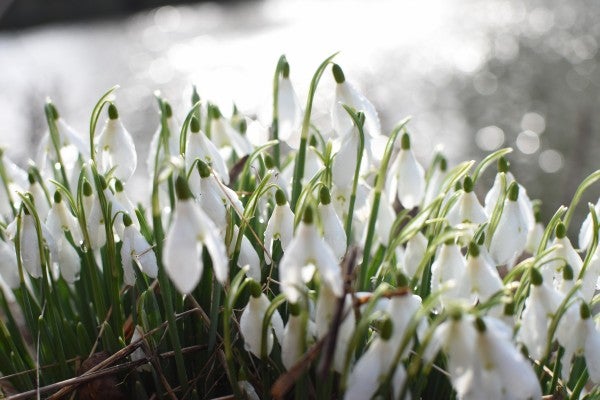Nikon D5500 Review - The Nikon D5500 builds on the success of its D5300 predecessor with the addition of a new touchscreen and tweaked design, amongst several other enhancements.
Nikon D5500 Review
Nikon D5500 Review – Image Quality
Colour and White Balance
As you might expect for a camera with the bulk of the same imaging tools as the D5300, the D5500 delivers excellent colour rendition. Even in dull and overcast conditions, as you’d conventionally find in an English winter, the D5500 captures tonally rich images with well-saturated colours. Our set of images taken in the lab revealed a very slight drop in colour saturation at the two highest ISO settings, but users shouldn’t see this as a concern as it’s less obvious when images are viewed in isolation.
The D5500’s white balance system can be relied upon to deliver consistent results in a wide range of shooting conditions. Those conscious of getting the perfect white balance for any given scene will be glad to read the D5500 also supports white balance bracketing, whereby it captures a warmer and cooler result.
Exposure
The D5500 features the same 2016-pixel metering sensor as seen in the D5300, and like its predecessor it performs well and offers Matrix, Center-weighted and Spot metering modes. The trio of metering modes generally offer enough flexibility to garner the correct exposure across a range of scenes, and it’s only in areas of particularly high contrast that the camera occasionally struggles with clipped highlights.
This is easily rectified by dialling down a few stops in the exposure compensation setting, however it would have been nice to see the D5500 inherit the ‘Highlight-Weighted Metering’ option system seen in the D810 and D750, which biases the exposure to help protect highlights and retain detail in the brightest areas.
Resolution
Thanks to the high pixel count and the removal of the low pass filter, the D5500 is capable of resolving high levels of detail, which is on a par with Nikon’s entry-level DSLR – the D3300. Between ISO 100 and 400 the model captures around 34 lines per picture height (l/ph) and this detail only begins to drop as you push up to ISO 800 and beyond.
At ISO 6400 we recorded 28l/ph, which again is consistent with the results recorded by the Nikon D3300. At the ISO ceiling of 25,600, detail falls away and we could just make out 24l/ph on our resolution test chart. It goes without saying, to squeeze the finest detail out of the D5500’s sensor it’s advisable to shoot between ISO 100-400.
Image Noise
Users of the D5500 can expect an impressive noise performance, with barely any trace of noise between ISO 100-400. Luminance noise does starts to appear as you push your way through the ISO settings, but even at ISO 800 it remains well controlled and doesn’t have a destructive effect on the level of detail that’s recorded.
Luminance noise is ever more prevalent beyond ISO 3200 and given that colour noise also starts to creep in at ISO 6400, we’d attempt to keep ISO 3200 as our maximum and only stray past this when there’s no alternative. Images taken at ISO 25,600 lack the detail and quality of the lower sensitivities and as such should remain a setting for use in emergencies only.
Raw vs. JPEG
As to be expected, the noise that appears in high-ISO images is far easier to remove and control if you shoot in Raw as opposed to JPEG. Raw files also allow for more detail to be pulled back in shadow and highlight areas when it comes to post processing.
Although the in-camera processing the D5500 applies to its JPEG’s isn’t as overpowering as we’ve seen from other DSLR’s in the past, you can expect JPEG’s to appear just a touch sharper straight out of camera than Raw files with a hint of more saturation. If you’re undecided by which file format to use, we’d recommend shooting Raw&JPEG for the best of both worlds.





